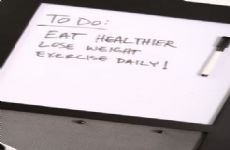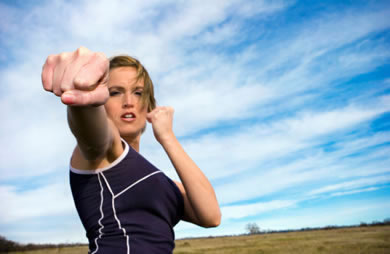|
Are you having a hard time getting yourself to exercise, because you just don’t like it very much? Well, you’re not alone. Most people who’ve been sedentary for awhile have a hard time getting started with exercise because it’s physically uncomfortable at first. The more out of shape you are, the harder it can be to get yourself up and moving. In most cases, this initial discomfort doesn’t last too long--especially if you start slowly and give your body a chance to adjust in stages instead of trying to run a marathon right away or recapture the glories of your youth overnight. With a little perseverance, patience, and experimentation, most people are able to find some form of exercise they enjoy enough to do it regularly. But according to this article, some people find it very hard to get past the feeling that exercise is just too unpleasant or difficult for them. I was one of those people for many years myself. My feet and ankles hurt even when I was just taking a slow walk, I broke out into a major (and embarrassing) sweat with the slightest activity, even in the cold winters of northern Montana, and I felt like a one-person traveling freak show if anyone saw me trying to exercise. I can’t even remember how many times I started a new exercise plan, got frustrated, and stopped again within a few days. These days, things are very different. I get frustrated when I have to miss my daily dose of bike riding and/or hiking around in the hills or sand dunes. And this change didn’t happen just because I lost a bunch of weight and the exercise got easier. In fact, it was the other way around. I lost weight because the exercise got easier. And that happened because I told myself to just shut up for a minute. Well, actually, someone else told me to shut up for a minute. Luckily for me, I happened to be in graduate school during this particular effort to start exercising again, and was taking a class about how our expectations pretty much determine what we get. Not in the superstitious sense that if you expect to win the lottery, you actually will. But in the sense that you see just what you’re expecting to see, which is never all there is to see. The professor was kind enough to use me as an example for the class, demonstrating how my expectation that I would feel miserable during exercise caused me to focus on the discomforts and look for reasons not to do it, and compared me to another student who, of course, was doing the exact opposite and making all kinds of progress. According to the professor, all I really needed to do was turn off that negative voice in my head that kept telling me all about my sore feet, how I was too heavy for exercise, how I’d just make things worse if I pushed myself to do something that didn’t feel good, etc, etc, etc. Once I stopped listening to that voice, he said, I’d be able to start hearing some other messages coming from less biased parts of me. He challenged me to go two weeks without listening to that negative voice, and instead, to keep a journal of what actually happened when I exercised, and how that made me feel. I couldn’t argue with the guy without getting into trouble, so I played along with his little experiment. And…well, the rest is history. Here I am telling you the same thing he told me. Do you tend to talk yourself out of exercising frequently with a lot of pessimistic or negative self-talk? Are you ready to take the same challenge I took? If so, here’s an article with some suggestions on how to keep the kind of journal my professor suggested to me: The Before-During-After Journal. Look it over and give it a try. You might be surprised at the results. |
Related Entries
More From SparkPeople
|





















.png)

